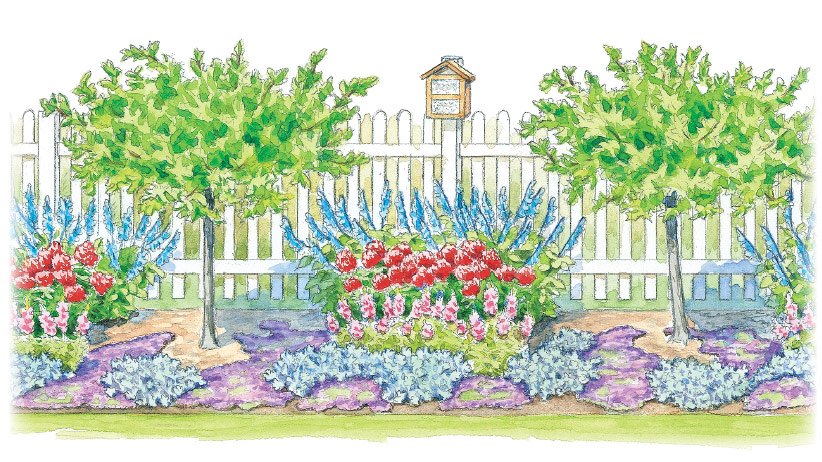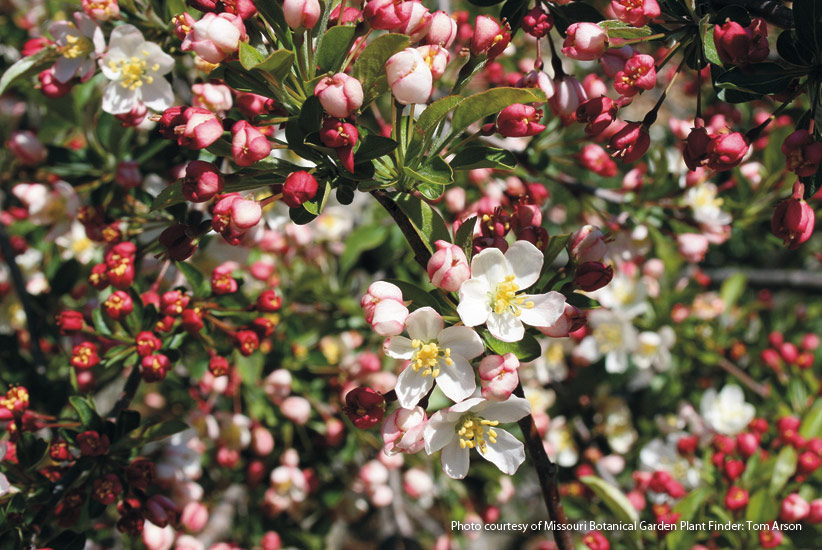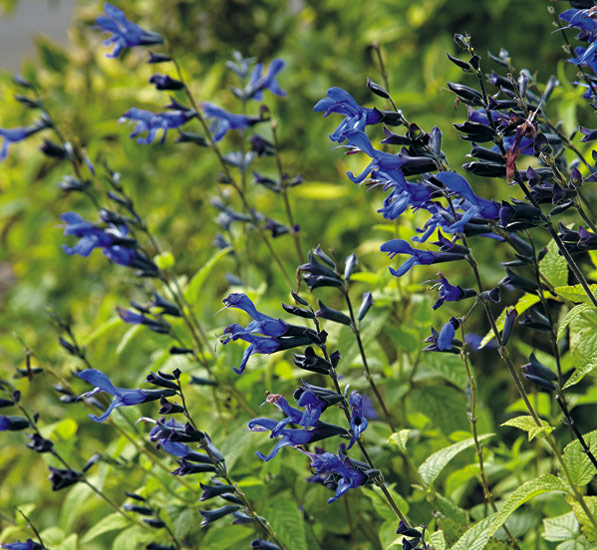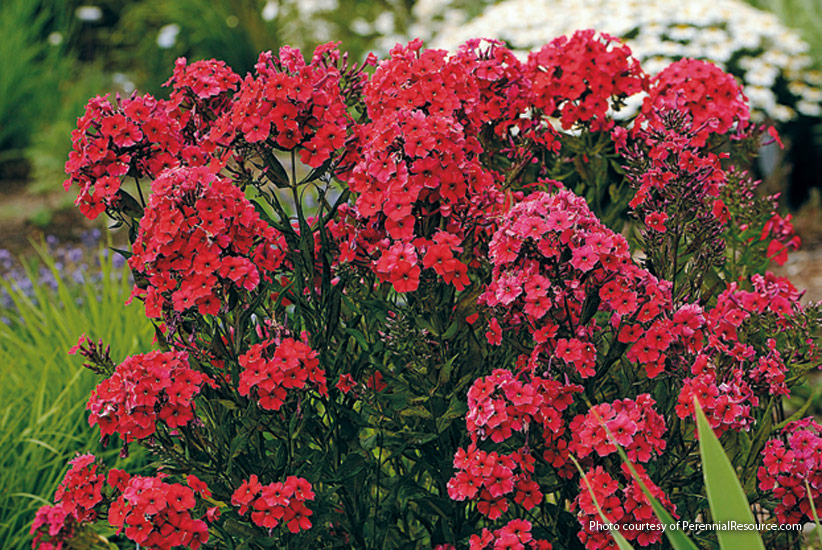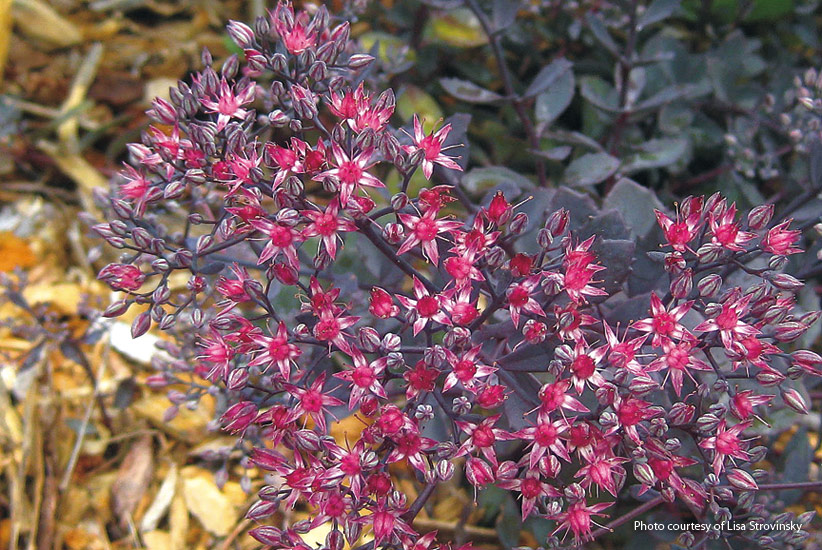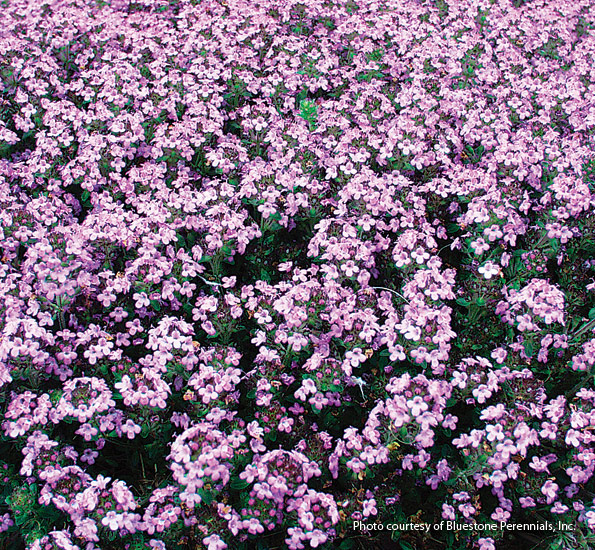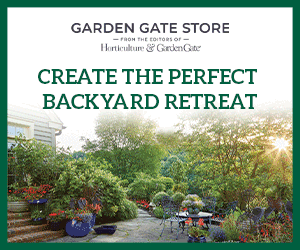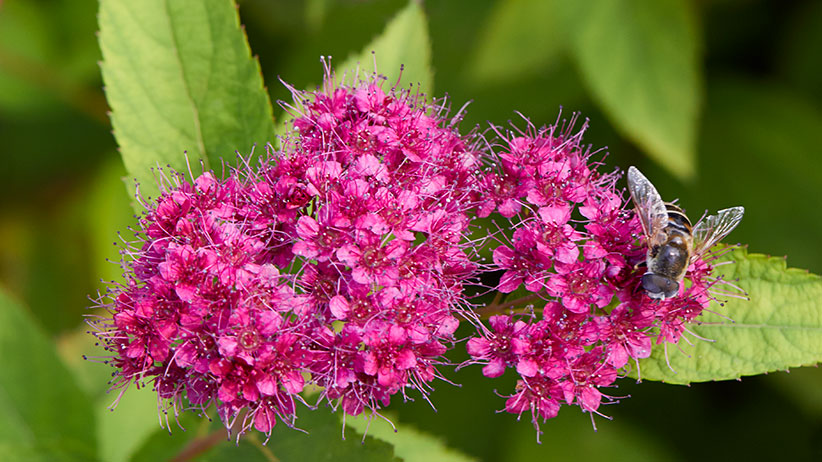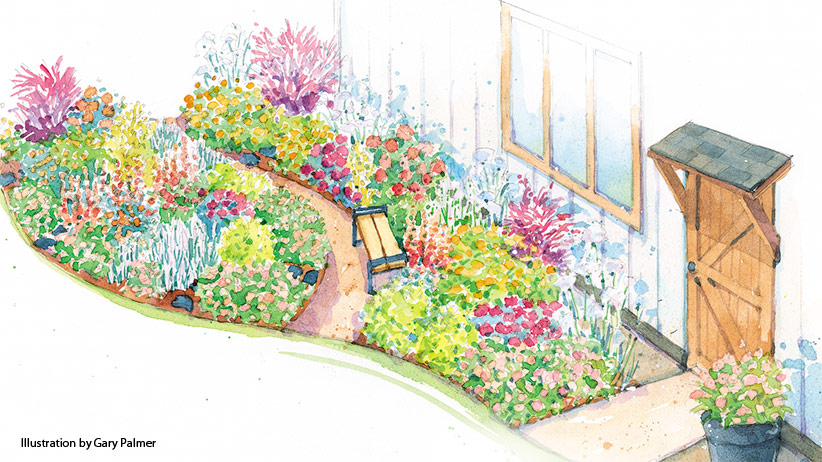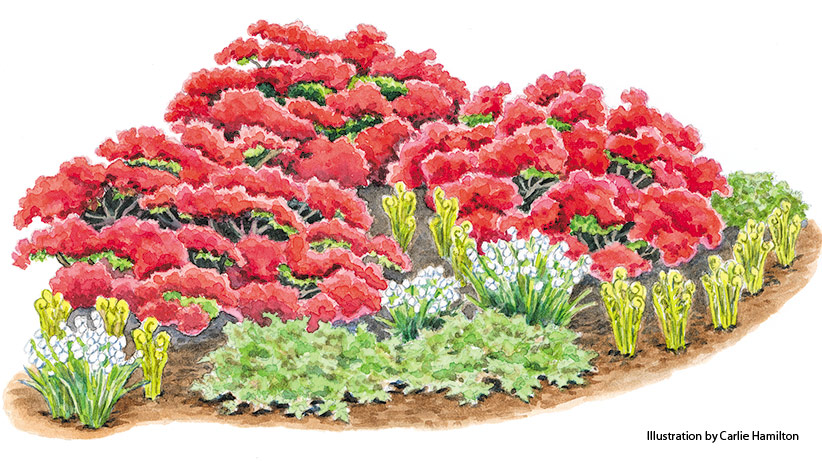Your garden does a lot, giving you a place to escape and relax all while adding beauty, color and interest around the yard. But did you realize the plants you grow are also essential food sources for pollinators, such as bees, butterflies and hummingbirds? These winged visitors are a joy to watch, but they do important work, too. And with a little planning, you can make sure your garden attracts them all season long. Plus, pollinator favorites are usually bright, bold blooms that draw the eye and fill any sunny spot with vivid color.
Getting started
Choose an area away from lots of foot traffic—a bed next to the back door may not be the best place for pollen- and nectar-rich plants. This way, pollinators will be able to feed without disturbance.
This border is at the edge of a backyard, where it gets at least 6 hours of sun each day, from morning to afternoon. Butterflies and bees need the warmth of a full sun spot to stay active. This is also the ideal growing condition for the plants these pollinators like.
Beautiful and beneficial
Some blooms in this garden, such as ‘Red Riding Hood’ garden phlox, with good resistance to powdery mildew, provide a buffet for bees, butterflies and hummingbirds alike. Others, like Solstice Purple snapdragon, a nectar source for hummingbirds, have unique characteristics that attract specific pollinators, reducing competition. And even after bees are done visiting ‘Tina’ flowering crabapple, its fruit will draw in songbirds through fall, extending this border’s wildlife interest.
Deadhead the snapdragon, which does best when nights are still cool, to encourage more blooms. Cutting back spent flowers helps keep ‘Black and Blue’ salvia—a magnet for bees and hummingbirds—going longer, as well. ‘Elfin’ creeping thyme’s low carpet of fragrant foliage handles light foot traffic well, which makes it easy to get into the bed to plant or pull weeds.
With low-maintenance growers like these in the yard, you’ll have more time to enjoy all of your garden’s guests.
Get the look of the garden below:
- The picket fence acts as a windbreak, protecting from gusts that could disturb pollinators as they feed or rest. But the 3-in. space between each slat ensures there’s good air circulation, too.
- A south-facing location with morning sun is best for mason bee houses, where the solitary pollinators mate and nest. Make your own by bundling dried, hollow stems about 8 mm. in circumference or purchase kits from online sources, such as Crown Bees™, www.crownbees.com, 425-949-7954.
- Tuck in early springblooming bulbs, such as grape hyacinth and daffodil, for pollinators that become active earliest in the season. The bulbs will get enough sun before other plants start to take off, and, as their foliage fades, it’s hidden by these low growers.
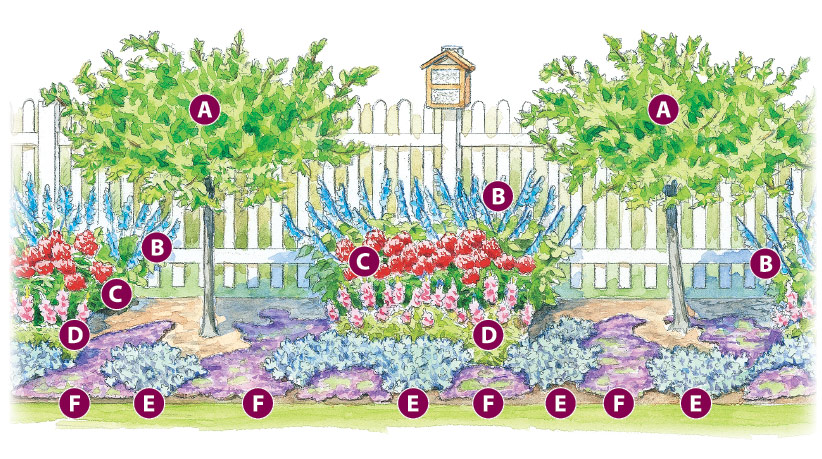
Keep clicking below to learn more about the plants.



